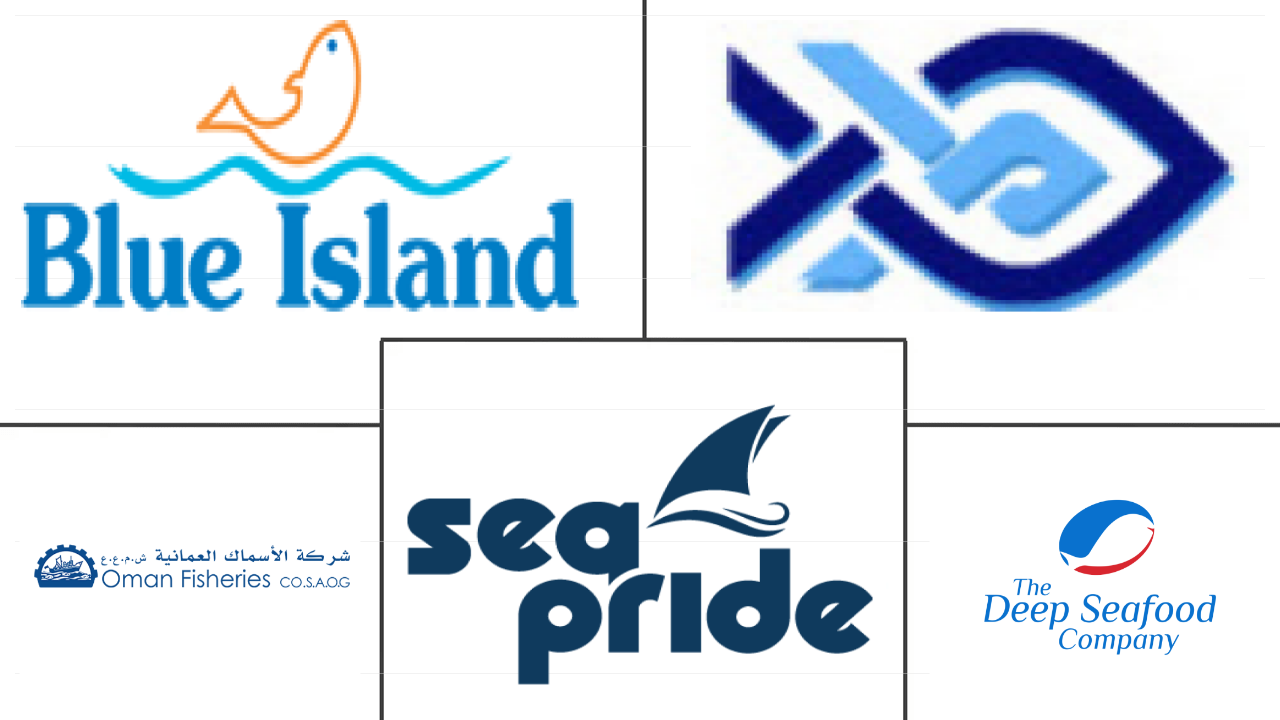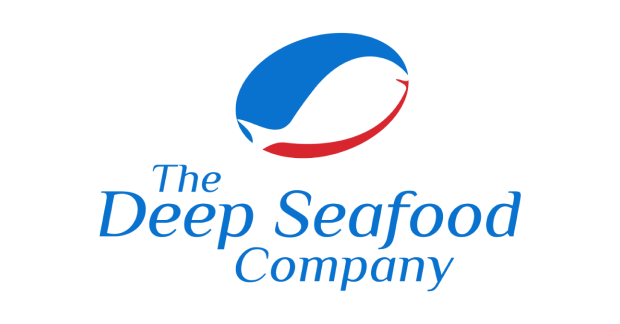Market Size of middle east seafood Industry
| Icons | Lable | Value |
|---|---|---|
|
|
Study Period | 2017 - 2029 |
|
|
Market Size (2024) | USD 21.73 Billion |
|
|
Market Size (2029) | USD 23.85 Billion |
|
|
Largest Share by Type | Fish |
|
|
CAGR (2024 - 2029) | 1.88 % |
|
|
Largest Share by Country | United Arab Emirates |
|
|
Market Concentration | Low |
Major Players |
||

|
||
|
*Disclaimer: Major Players sorted in no particular order |
Middle East Seafood Market Analysis
The Middle East Seafood Market size is estimated at 21.73 billion USD in 2024, and is expected to reach 23.85 billion USD by 2029, growing at a CAGR of 1.88% during the forecast period (2024-2029).
21.73 Billion
Market Size in 2024 (USD)
23.85 Billion
Market Size in 2029 (USD)
2.67 %
CAGR (2017-2023)
1.88 %
CAGR (2024-2029)
Largest Segment by Type
64.64 %
value share, Fish, 2023
The region's demand for fish is fueled by a range of factors, including fish's lower price, greater nutritional value, and ease of availability due to increased production.
Largest Segment by Country
6.30 %
value share, United Arab Emirates, 2023
UAE dominates the market as there is a growing demand for organic fish, that is being driven by high-income immigrants and buyers who support sustainable seafood.
Fastest-growing Segment by Type
3.57 %
Projected CAGR, Shrimp, 2024-2029
Regional government adding an effort to increase the local production of shrimps in Bahrain, Saudi Arabia, UAE, and others for makes shrimp a promising market segment.
Fastest-growing Segment by Country
2.44 %
Projected CAGR, Bahrain, 2024-2029
The surging sales of fish is driving the Bahrain market. Local consumers favor domestic seafood because they believe it is sustainably farmed and of acceptable quality.
Leading Market Player
0.35 %
market share, The Deep Seafood Company, 2022

The company provides a wide range of premium quality fish products to consumers through its extensive distribution network to ensure the freshness and quality of its products.
Saudi Arabia dominates the regional market with the assistance of strategic investments and partnerships
- In 2022, fish occupied the largest market share by value and volume among all other seafood variants. The sales value grew at a CAGR of 2.37% during 2017-2022. The increasing health consciousness among the majority of the population and preference toward a nutrient and protein-rich diet without added cholesterol components is leading consumers to spend more on different varieties of fish like sardines, salmon, and tuna. Apart from hosting extensive desert lands, the Middle East comprises miles of coastline that assist in the growth of local fisheries.
- Shrimp is projected to be the fastest-growing seafood segment in the Middle East, both by value and volume, during the forecast period. Most of the shrimp is imported from Asian countries like India, Pakistan, and China. Shrimps are one of the ideal choices for consumers opting for a protein-rich weight loss diet. Obesity is a pressing issue in the Middle East, with Kuwait, Jordan, and Saudi Arabia having more than 25% of their population identified as obese as of 2023, expanding the opportunity for the shrimp industry to flourish in the region.
- Saudi Arabia is one of the most significant countries in the region, occupying one of the highest market shares by value and volume in the market during the study period. The Kingdom launched the National Fisheries Development Program as a part of its Vision 2030 to raise a fund of USD 4 billion in 2022. This fund was raised to increase infrastructure and develop the workforce for inland fisheries cultivation. The United Arab Emirates proposed fuel subsidies to its fishing sector to reduce operating costs in 2022, partnering with the UAE Ministry of Climate Change and the Environment, Abu Dhabi National Oil Company, and Emirates National Oil Company.
Increasing private sector investments in seafood production driving demand in the regional market
- The United Arab Emirates is the leader in the Middle Eastern seafood market. The country's seafood consumption per person has increased, reaching 25.50 kg in 2021, ranking second only to Oman's 29.01 kg. The demand for seafood products is being driven by an expanding population with rising income levels and a growing appetite for fish. Nearly 90% of the Emirati population comprises immigrants, and typical meals in these migrants' home countries often include seafood products. Indians make up over 40% of the total population in the United Arab Emirates, followed by Indonesians, Bangladeshis, etc.
- Saudi Arabia intends to produce 300,000 metric tons of fish by 2025 and 600,000 metric tons by 2030. The aquaculture industry's pre-harvest, production, and post-harvest segments have seen a sharp increase in private sector investments as a result of these initiatives. Saudi Arabia's partnership with the Network of Aquaculture Centers in Asia-Pacific (NASA) would also greatly increase its seafood production. The higher availability of seafood is expected to boost the local demand further.
- Bahrain is projected to register the fastest CAGR of 5.11% by value during the forecast period. Fish farming is a crucial industry that the government relies on to ensure food security, as marine products comprise key food items in Bahrain. In 2021, six plots of land were identified as candidates to boost agricultural production and fish farming as part of efforts to ensure the country's food security. The move is expected to achieve 50-62% self-sufficiency in fish production. Investing in fish farming has many benefits, such as reducing the pressure on natural resources and releasing fish fingerlings raised on farms into the wild to restock Bahrain’s population.
Middle East Seafood Industry Segmentation
Fish, Shrimp are covered as segments by Type. Canned, Fresh / Chilled, Frozen, Processed are covered as segments by Form. Off-Trade, On-Trade are covered as segments by Distribution Channel. Bahrain, Kuwait, Oman, Qatar, Saudi Arabia, United Arab Emirates are covered as segments by Country.
- In 2022, fish occupied the largest market share by value and volume among all other seafood variants. The sales value grew at a CAGR of 2.37% during 2017-2022. The increasing health consciousness among the majority of the population and preference toward a nutrient and protein-rich diet without added cholesterol components is leading consumers to spend more on different varieties of fish like sardines, salmon, and tuna. Apart from hosting extensive desert lands, the Middle East comprises miles of coastline that assist in the growth of local fisheries.
- Shrimp is projected to be the fastest-growing seafood segment in the Middle East, both by value and volume, during the forecast period. Most of the shrimp is imported from Asian countries like India, Pakistan, and China. Shrimps are one of the ideal choices for consumers opting for a protein-rich weight loss diet. Obesity is a pressing issue in the Middle East, with Kuwait, Jordan, and Saudi Arabia having more than 25% of their population identified as obese as of 2023, expanding the opportunity for the shrimp industry to flourish in the region.
- Saudi Arabia is one of the most significant countries in the region, occupying one of the highest market shares by value and volume in the market during the study period. The Kingdom launched the National Fisheries Development Program as a part of its Vision 2030 to raise a fund of USD 4 billion in 2022. This fund was raised to increase infrastructure and develop the workforce for inland fisheries cultivation. The United Arab Emirates proposed fuel subsidies to its fishing sector to reduce operating costs in 2022, partnering with the UAE Ministry of Climate Change and the Environment, Abu Dhabi National Oil Company, and Emirates National Oil Company.
| Type | |
| Fish | |
| Shrimp | |
| Other Seafood |
| Form | |
| Canned | |
| Fresh / Chilled | |
| Frozen | |
| Processed |
| Distribution Channel | ||||||
| ||||||
| On-Trade |
| Country | |
| Bahrain | |
| Kuwait | |
| Oman | |
| Qatar | |
| Saudi Arabia | |
| United Arab Emirates | |
| Rest of Middle East |
Middle East Seafood Market Size Summary
The Middle East seafood market is experiencing a steady expansion, driven by increasing health consciousness and a shift towards protein-rich diets. Fish, particularly varieties like sardines, salmon, and tuna, dominate the market due to their nutritional benefits. The region's extensive coastlines support local fisheries, while shrimp is emerging as the fastest-growing segment, largely imported from Asian countries. The market is characterized by significant government initiatives, such as Saudi Arabia's National Fisheries Development Program and the UAE's fuel subsidies for the fishing sector, aimed at boosting local production and reducing reliance on imports. These efforts are part of broader strategies to enhance food security and support the growing demand for seafood, fueled by rising income levels and a diverse expatriate population.
Saudi Arabia and the United Arab Emirates are key players in the region, with Saudi Arabia leading in fish production and the UAE boasting the highest per capita fish consumption in the Gulf Cooperation Council. Both countries are investing heavily in aquaculture and fisheries infrastructure to meet increasing demand and sustain growth. The market is fragmented, with major companies like Blue Island PLC and Oman Fisheries Co. SAOG playing significant roles. Despite challenges such as overfishing and high fish prices, driven by demand outpacing supply, governments are implementing measures to stabilize prices and support low-income families. The Middle East seafood market is poised for continued growth, supported by public and private partnerships and strategic investments in production capabilities.
Middle East Seafood Market Size - Table of Contents
-
1. MARKET SEGMENTATION (includes market size in Value in USD, Forecasts up to 2029 and analysis of growth prospects)
-
1.1 Type
-
1.1.1 Fish
-
1.1.2 Shrimp
-
1.1.3 Other Seafood
-
-
1.2 Form
-
1.2.1 Canned
-
1.2.2 Fresh / Chilled
-
1.2.3 Frozen
-
1.2.4 Processed
-
-
1.3 Distribution Channel
-
1.3.1 Off-Trade
-
1.3.1.1 Convenience Stores
-
1.3.1.2 Online Channel
-
1.3.1.3 Supermarkets and Hypermarkets
-
1.3.1.4 Others
-
-
1.3.2 On-Trade
-
-
1.4 Country
-
1.4.1 Bahrain
-
1.4.2 Kuwait
-
1.4.3 Oman
-
1.4.4 Qatar
-
1.4.5 Saudi Arabia
-
1.4.6 United Arab Emirates
-
1.4.7 Rest of Middle East
-
-
Middle East Seafood Market Size FAQs
How big is the Middle East Seafood Market?
The Middle East Seafood Market size is expected to reach USD 21.73 billion in 2024 and grow at a CAGR of 1.88% to reach USD 23.85 billion by 2029.
What is the current Middle East Seafood Market size?
In 2024, the Middle East Seafood Market size is expected to reach USD 21.73 billion.

